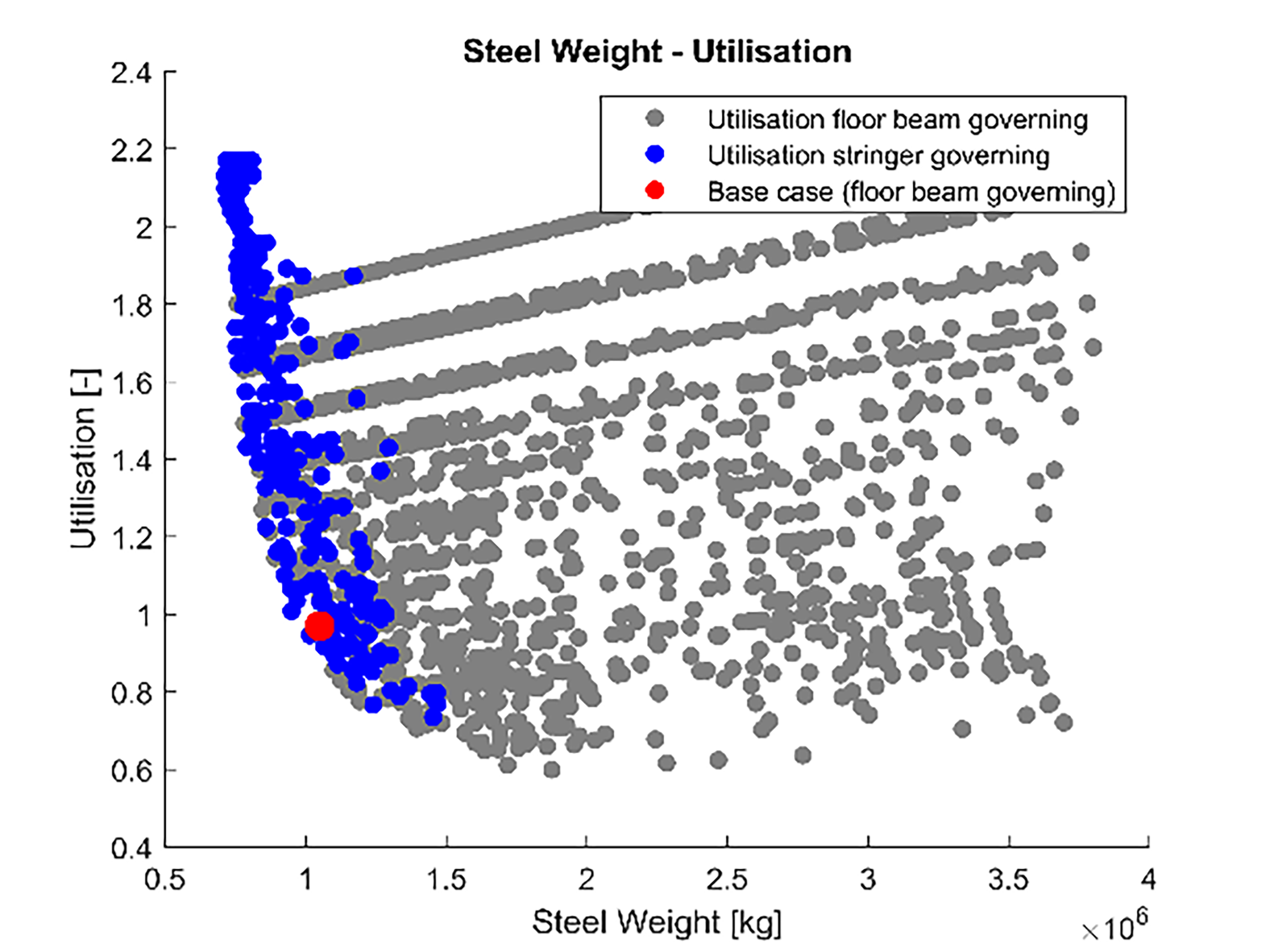Parametric Modelling and Generative Design of Concrete Structures
Investigation and Evaluation of Generative Design Toolboxes for the Bridge Design Case
Author: Nathalie Chiaverio
Language: English
Abstract
The design of structures, and especially the bridge design case, involves many different design parameters. Together with possible objectives and performance goals, this can lead to a vast amount of different design options. Recently, there is an increasing interest in finding options of performing early design space exploration instead of simply validating initial design choices. As a consequence of the steadily growing use of Artificial Intelligence (AI), Generative Design has become a possible approach for the described problem. Generative Design not only automates the optimisation process but can also lead to the generation of design options, which are beyond the ideas and the experience of the engineer.
This thesis is about the investigation and the evaluation of existing Generative Design toolboxes for the bridge design case. For the investigation, a parametric model of the floor system of a bridge is implemented in the software Grasshopper for Rhinoceros 3D. The Blennerhassett Island Bridge is used as the reference structure. A major part of the work covers the examination of the toolbox Design Space Exploration (DSE), which is a plugin for Grasshopper and was developed at MIT. Moreover, Octopus, another optimisation tool for Grasshopper, is investigated in more detail.
The DSE works for the implemented model and a collection of different designs is generated. Furthermore, an optimal solution with a decrease in steel weight of nearly 10%, compared to the base case, is found. Many designs, however, are away from the optimum and 71% of the total data is not valid because of the utilisation ratio, which is too high. Thus, there is a significant amount of wasted computing effort, and thus the algorithm NSGA-II does not seem ideal for engineering problems. In comparison to the DSE, the optimisation tool Octopus performs better from an engineering point of view. The generated designs are closer to the optimal solution and the number of invalid designs is significantly smaller.
Overall, the thesis raises the question of the value of Generative Design for the engineering field in general. Generative Design enables the generation of various design options and provides the engineer with a large amount of optimal solutions to choose from. However, when applying AI to a problem, the engineer also has to consider environmental and social aspects. Thus, the energy used for the computation needs to be at a reasonable extent. The choice of a sustainable algorithm is therefore crucial. Whether or not the generated data is useful, is not solely determined by the optimisation algorithm, however. The definition of the objective functions and the implementation of a suitable loss function are essential for the output data as well. Hence, Generative Design has great potential but only when its application is efficient for the considered problem.

